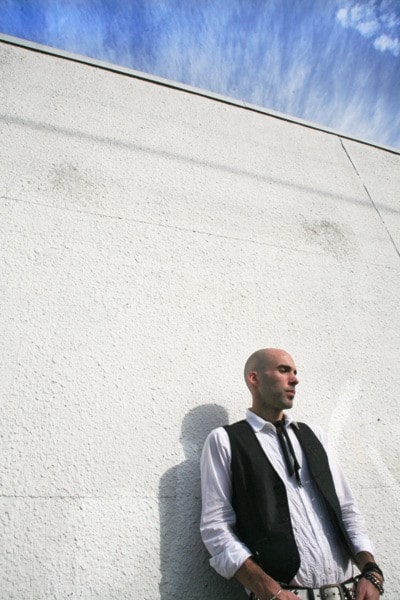Stark, powerful, brooding.
Ron Pogue’s photographs capture the beauty in unexpected places. The locations that many do not see or notice; areas whose loneliness and emptiness create their own subtle shapes and stories.
Photographs by Ron Pogue opens at the Corre Alice Gallery in Cumberland this Friday with a reception at 7 p.m.
About a dozen 40x50-inch colour and black and white photographs will showcase the best of Pogue’s new work featuring Cumberland and elsewhere in the Comox Valley. The theme is vacant spaces.
“That is the overarching theme of most of my work,” explains Pogue. “I like to photograph places and buildings that have seen or are approaching the end of their days.
"I look for the ways light affects an empty space and the overlapping of shadow and light. My images are like a stage set when the actors have gone.”
Pogue fell in love with photography when he was six.
“I remember using my Kodak camera on a family trip to take pictures of bison and a Turbo gas station,” he recalls. “Even then I was trying to capture the cool power of these subjects.”
When he was in Grade 11, Pogue got serious about the craft. After high school, he obtained a diploma in design at North Island College, followed by a Bachelor of Photography at Emily Carr University.
“Brian Scott was my first-year instructor at North Island College,” says Pogue. “I learned a lot from him, both how to create art and how to live as a real artist. Brian is very straightforward: he see, he paints, he sells.
"For me, going to work is something I do some of the time; photography is something I do all the time.”
Pogue, who works at Edible Island and is dad to two young children, fits art in when and where he can. That means carrying his camera is as automatic as putting his shoes on. It also means getting up at odd hours to photograph the sunrise or the way light affects a wall, doorway or convention of crows.
Pogue recently pulled the midnight to 5 a.m. shift for the Comox Valley Record’s 24-hour A Day in the Life of the Comox Valley photographic supplement, which appeared in Wednesday's paper.
“I drove around all night looking for places with lights on,” he says. “There’s more going on than a person realizes: police, paramedics, shelf stockers at Superstore, gas stations, motels. I took photos all night and then went to work in the morning.”
Pogue also contributes photographs to the Record’s About Town supplement, takes photographs at the Big Time Out and collaborates with friends on images for fashion design. Some of his photos are on exhibit at the Comox Valley Airport.
“My personal work rarely shows people,” he says. “Most of the images are taken outside, and if there are people, they don’t predominate. My primary focus is contemporary land or cityscapes.”
Influences in his career include Pogue’s grandfather, who was a Canadian Air Force photographer during World War II; Albert Watson and Henri Cartier Bresson.
“Watson’s images are totally traditional in execution but sublimely on edge regarding subject matter,” notes Pogue. “And Bresson was known for waiting for the decisive moment to take his photographs – that instant in time when the elements combine to create the perfect image.”
And that’s Pogue’s goal, to be present at the moment when light and subject fuse perfectly.
The biggest challenge, of course, is time. No creative person ever has enough of it. And Pogue constantly asks himself, “Will this photograph matter in the long run? How can I make it different? How can I make it strike a chord with someone else?”
To obtain feedback, he’s posted 9,000 high-res images on his Facebook page and entered contests as far away as New York City.
“My photography is a continual work in progress,” he says. “In addition to my formal training. I’m always learning by talking to and observing the work of others and experimenting on my own. And I’m always looking for that magic moment of light.”
Photographs by Ron Pogue continues at the Corre Alice Gallery for the month of November. The gallery, the distinctive blue building bearing the sign Frelone’s Grocery, is located at 27
